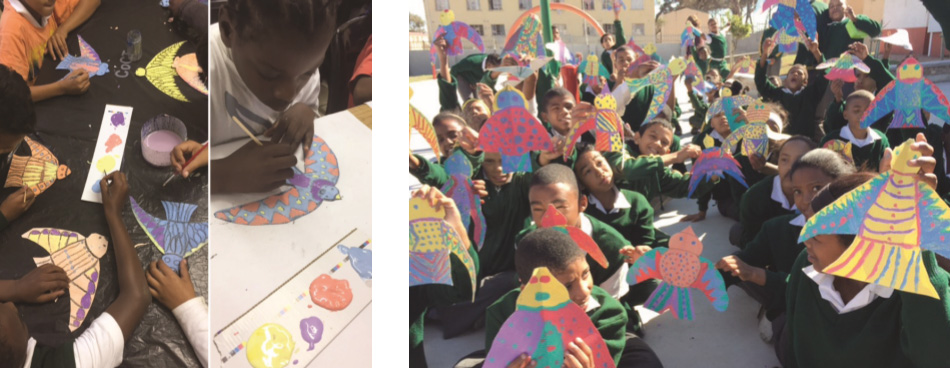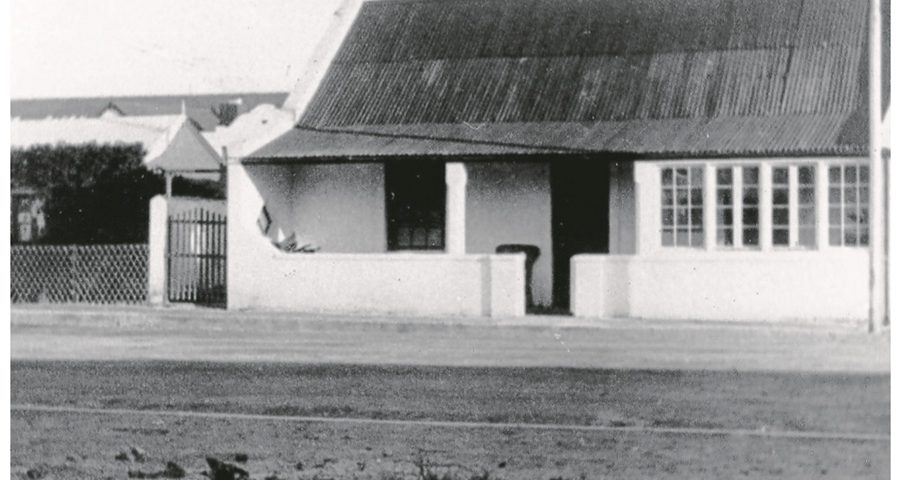
Heart and Home report
February 5, 2018
The Selected Letters of Marthinus Theunis Steyn (1904-1910). A Tale of Courage and Obstinacy
February 27, 2018Take a walk along the east side of Main Road in the Hermanus central business district. Stop at the pedestrian crossing outside the Pick n Pay store and look across the road. You will see a service station to your right, a bank of post boxes in front of you and the Post Office to your left.
Seventy years ago you would have seen what is in the photograph — a small fishermen’s cottage, with a corrugated iron (originally thatch, no doubt) roof and an even smaller wooden building attached. The smaller building is almost completely covered in creepers. You would be looking at the home, studio and shop of Thomas Daniel Ravenscroft, the best and most well-known South African photographer of the 18th and 19th centuries. He lived and worked here from the 1920s until his death at 97 in 1948. Known professionally as TD Ravenscroft, he took thousands of photographs of South Africa and South Africans from about 1860 (when he was still a teenager) until the year of his death in 1948. He travelled widely to every part of the country and photographed hundreds of farms and villages. In villages, his usual method was to capture the centre of the village from three or four angles and then to take his camera some distance away and compose and record a panoramic view. These perspectives became his trademark. The Ravenscroft family originated in Cheshire, in the north-west of England. The name is apparently ancient, but easily understood. It is derived from a place name meaning “ravens field” or “paddock”. TD’s forefathers were among the 1820 settlers who located themselves at Malmesbury. TD was born there in 1852, and by age 17 he was apprenticed to a photographer. He started travelling at once and never really let up until his retirement to Hermanus. He married Elizabeth Viljoen, and his wife travelled with him. The first five of their 11 children were born in or under the travelling cart.
He began to create photographic portraits and found a ready market forthese. He also printed many photographs in a fashionable sepia on penny postcards and sold large numbers of these. These sales constituted his main income for years. In the 1880s he was appointed official photographer to the Government of the Cape Colony and documented places and events for them. He then met Rhodes who agreed to sit for a portrait. He was pleased with the result and TD carried out various assignments for Rhodes as Prime Minister. Soon after that he was appointed official photographer to South African Railways, where he must have met a devotee of Hermanus, Sir William Hoy.
Perhaps this was instrumental in his retiring to Hermanus. His retirement was lengthy and he became something of a character around town. He was deeply religious and conducted open-air services in Hawston until he could no longer drive there at age 95. The house was named “Linquenda” which, Google tells me, is the opening word in a Latin poem. The complete line is translated as “Each one of us must leave the earth he loves…” He declined to photograph women in trousers, referring to a biblical quotation about a woman in man’s clothing being an abomination. He continued to work until a week before his death in 1948. He was then 97 years of age and worthy of the description “the world’s oldest working photographer”. He is buried in the Hermanus Cemetery. Luckily, thousands of his photographs still exist. There are at least 3 000 in the National Archives, and the De Wetshuis Museum in Hermanus has many more. It also has glass negatives, which were used by Ravenscroft later in life.
After his death he was created one of only five persons to be named “Freeman of Hermanus”. A street named for him runs between the MediClinic and the National Space Agency. I am sure every reader will enjoy a visit to the Photographic Museum, which is housed in a small, red-roofed cottage in the Market Square.
You can also buy copies of photographs in a variety of formats.

